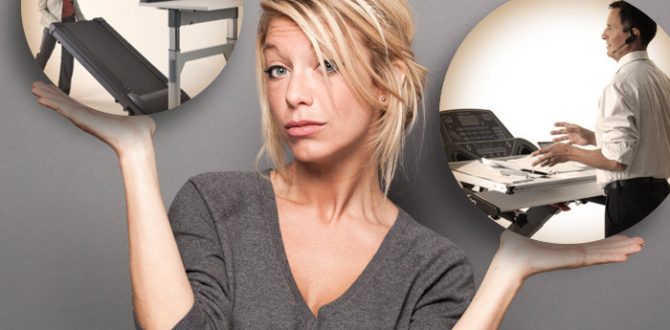Treadmill desks offer a big advantage: Improving your health. But are they worth the cost and other potential cons?
A 2015 research study concluded that walking at a treadmill desk for two hours a day can improve blood pressure and sleep, among other health benefits. Treadmill desks are particularly attractive to busy office workers who are primarily sedentary and have little time for working out. Instead of devoting, say, an hour to a walk, you can walk all day and still get your work done — at least in theory.
A treadmill desk may also be compelling to a company’s employee fitness challenge competitors. But some wristband activity trackers won’t log all treadmill steps while your hands rest on the desktop. (Check out these Fitbit community threads, for example.)
We cover the merits of treadmill desks in 11 treadmill desks to step up your fitness game, but here four things to consider before you run out to buy one.
IKEA-like assembly torture
If you thought assembling IKEA furniture was hard, heads up. Unless you pay for “white glove delivery” (about $200), you’ll have to put your treadmill desk together. And, big surprise, some consumers say it’s not nearly as easy as manufacturers claim. As one Amazon reviewer wrote about LifeSpan’s TR1200-DT7: “Assembling the desk is NOT a one man job, and the people that came up with this assembly should be strung up by their toes. There is NO WAY a human being can slip their fingers into the tiny space underneath the desktop and actually connect the electronics. The only way to do it is to get two people to hold the desk up above the mechanism, and have a third person do the connections.”
[ Related slideshow on treadmill desks ]
You may be distracted
A 2015 study found that treadmill desk users “performed worse on almost all aspects of thinking, including the ability to concentrate and remember,” vs. those who sat, The New York Times reports. Users were also “much worse” at typing. “I’ve found a treadmill desk worked well when I was doing tasks that didn’t require me to do any real cognitive work,” writes entrepreneur Bernie Klinder on Quora. “I could read email, surf the web, etc. But if I had to be creative or dive into a technical task (most of my day), I broke my pace and got thrown off the treadmill.”
What about sitting?
Want to be on a treadmill only part of the workday? There’s no clear-cut solution to have it both ways. NordicTrack desks (featured in this slideshow) offer a workaround, as does Steelcase (for a princely sum of $4,745). One option is to use a standalone desk (without an attached treadmill) with a base at least 65 inches wide, which could accommodate both a chair and an under-desk treadmill like LifeSpan’s TR800-DT3 ($699). Alternatively, you could sit part-time on a stability ball atop the treadmill, like this one from LifeFitness ($55). A third, more expensive and space-hogging option: Maintain both a traditional desk/chair as well as a treadmill desk and move your laptop between them.
Most aren’t meant for workouts
The idea is to move at a slow pace, say 2 mph or less, on the treadmill while working. But what if you’d like a treadmill for sweaty, hard-core workouts, too? Many treadmill desks only go up to 4 mph and aren’t recommended for workouts for safety reasons. NordicTrack’s Treadmill Desk Platinum ($1,499) goes up to 8 mph. Also, desk-focused treadmills typically lack the level of cushioning that more powerful treadmills for runners offer. That’s something to consider if you’re dealing with chronic lower-body aches or pains.
This story, “These desks are made for walking” was originally published by
CIO.






